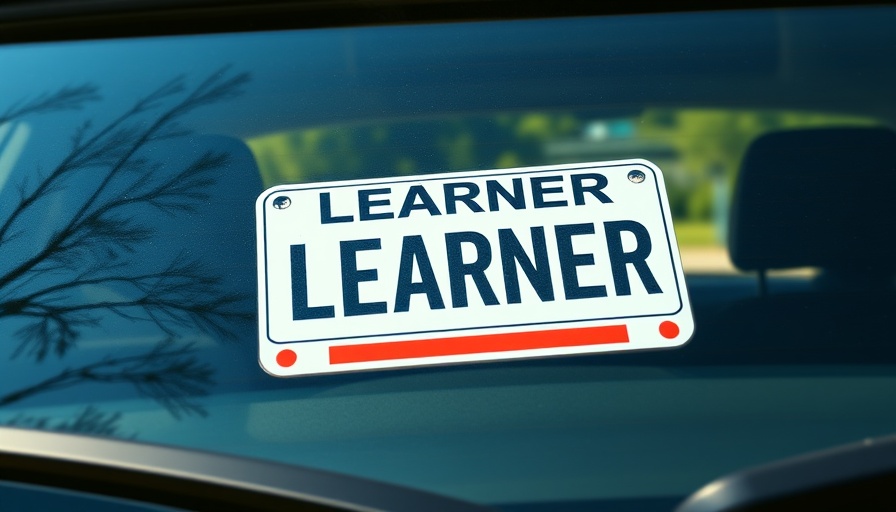
Understanding L Plates: A Global Perspective
When you spot a car adorned with a big “L,” what you’re seeing isn’t just a random sticker. It signifies that the driver is in the process of learning how to navigate the roads. Known as learner plates or L plates, these signs serve as a crucial communication tool for both novice drivers and those on the road. From the bustling streets of Sydney to the calm suburbs of the UK, L plates are a universal sign of the exciting yet daunting journey into independent driving.
The Importance of L Plates
Learning to drive is a rite of passage that comes with its fair share of excitement, as well as anxiety. The L plate acts as a beacon, indicating to other motorists to exercise caution and patience around learner drivers. This extra level of respect on the road helps to enhance safety for everyone involved. In many places, specific regulations require learner drivers to display these plates, making their use not just a suggestion but a necessity.
Where Are L Plates Commonly Used?
While L plates are used across various countries, their appearance and rules differ significantly. In the United Kingdom, for instance, learner drivers must display L plates on the front and back of their vehicles at all times while operating the vehicle. In Australia, the regulations can vary by state, with some areas using the traditional red and white plates, while others opt for black and yellow. In New Zealand, learner drivers are also required to have L plates and must be accompanied by a licensed driver. In contrast, the United States and Canada lean towards different identification systems, where learner drivers are recognized through license types rather than physical stickers, although some may still opt for a “Student Driver” sign.
The Learner Driver Experience: Who Uses L Plates?
Many individuals can be seen using L plates, ranging from new drivers who have just obtained their learner’s permits to driving instructors who need to make their teaching role evident. Additionally, parents or guardians helping learners practice often display these plates to indicate that they are assisting new drivers. This shared understanding helps mitigate potential road rage from impatient drivers and fosters a supportive environment for learning.
The Role of Supervision in New Driver Regulations
One common regulation for learner drivers is the requirement of supervision by a fully licensed driver. This rule varies across countries and even regions, aiming to ease new drivers into the responsibilities of operating a vehicle. The oversight offers an added layer of safety and reinforces responsible driving behaviors before learners transition to independent driving.
Common Misconceptions About L Plates
One prevalent myth is that displaying an L plate alone absolves a learner driver from all responsibility on the road. In reality, learner drivers must adhere to the same traffic laws as their experienced counterparts. While they often face additional restrictions—such as limitations on driving after hours or the requirement of a supervising driver—they are still expected to demonstrate safe driving practices.
Benefits of Knowing About L Plates
Understanding the significance of L plates can lead to safer driving experiences for everyone. Knowing that a vehicle displays an L plate encourages more seasoned drivers to offer patience and understanding, reducing road-related stress for learners. Moreover, being aware of how and where these plates are used globally can enhance cultural empathy, especially when visiting countries with differing traffic regulations.
Encouraging Patience and Road Safety
As society progresses towards a more inclusive understanding of learning experiences—in everything from educational frameworks to practical skills—acknowledging the significance of L plates provides an opportunity for all road users to prioritize safety. The next time you see a car sporting a large “L,” remember that this is not just an emblem of inexperience but also a symbol of growth and learning.
In our fast-paced lives, it’s vital to extend a little extra kindness on the road. By recognizing and respecting the signs of change, like learner plates, we contribute to building safer communities for everyone. The road to becoming an experienced, confident driver can be daunting, but with the right support and understanding, each learner driver can thrive.
 Add Row
Add Row  Add
Add 




Write A Comment